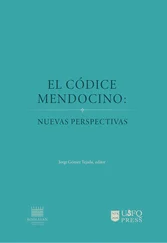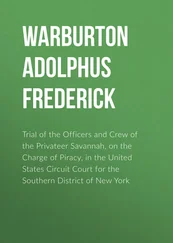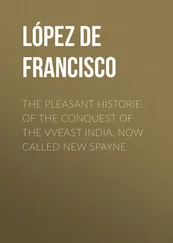In some dark brown areas (folio 2r: eagle and darker hue of tetl sign; folio 63r: wooden stick in front of the hands of the beaten individual; and folio 64r: feathers of the lower right man), XRF spectra show signal of iron and (except on folio 64) manganese, an indication of the presence of manganese-based compounds (such as oxides and/or hydroxydes) which frequently occur along with iron oxides in natural earth pigments. The reflectance profile does not give any indication of their molecular composition.
Other brown areas, mostly with light hues also including the “fleshy” color used for human skin (folio 2r: skin of the upper right man and folio 64r: left mantle in the third register and leg skin of the central prisoner in the fourth register), were painted with organic dyes, as indirectly indicated by the low iron content and the increase of potassium. These characteristics are usually associated with the presence of a lake pigment, although these components do not represent conclusive proof of such a pigment. In some cases, as in the light hue of tetl on folio 2r, finding a low signal of iron does not allow us to conclusively determine if the paint in question was a dye or a diluted earth pigment, though the latter of these is more probable.
Sometimes, it seems that earth pigments and dyes were superimposed over one another: for example, the canoe on folio 63r, seems to have been painted with the light brown dye and then the dark shade on its bottom was probably added with an earth pigment.
Blue
All blue areas of the Codex Mendoza (measured on all selected pages) were painted with Maya blue, the well-known organic-inorganic hybrid pigment that was obtained by heating a mixture of indigo and palygorskite, whose presence has been detected by both FTIR and UV-Vis reflectance. The different degrees of darkness observable in the manuscript’s blue areas did not result in different instrumental readings. These variations in darkness must have been obtained by means of different dilutions and/or the repeated overlaying of the color, which nevertheless always shows a dense, covering aspect.
It seems that Maya blue was not explicitly mentioned in historical sources. However, it has recently been convincingly proposed that the term texotli could precisely refer to hybrid organic-inorganic blue pigments, including the one we call Maya blue (Dupey García 2010, 83–85; 2015, 155; 2016; Magaloni Kerpel 2012, 71).
Green
As expected on the basis of the two different yellows previously commented, two different greens were detected on the manuscript, both of them obtained by mixing or superimposing Maya blue and one of the two yellow colors used in the manuscript. In fact, in all green areas, mid-FTIR analysis detected palygorskite, the inorganic substrate of Maya blue and UV-Vis reflectance allowed the conclusive identification of the pigment. The dense, covering appearance of both the Codex Mendoza’s greens is thus clearly related to the use of Maya blue.
The yellow chromatic component of the first of the two greens (folio 2r: thatch of the upper temple and folio 37r: darker area of the headdress’s feathers) is orpiment. The second green contains the yellow dye used for some of the yellow areas. This green was detected on the cactus on folio 2r and in both shades of the green feathers of the central warrior, in the third register of folio 64r. On the reeds on folio 2r and on the lighter shade of the headdress feathers on folio 37r, As is present only in low amounts. We cannot state with certainty which of the two greens was used, since the low amount of As could be due to the thin layer of highly diluted coloring material.
Green colors mentioned in historical sources are quiltic and yappalli, both of them obtained by mixing zacatlaxcalli and texotli, that is a yellow organic dye and Maya Blue, with the latter being a darker, even brownish one (Dupey García 2015, 156; 2016). Quiltic is then the most likely candidate as the Nahuatl name of one of the green colors detected on Codex Mendoza.
Discussion
In general terms, the pictorial imagery of the Codex Mendoza shows that a quite homogenous palette composed mostly of traditional painting materials of obvious pre-colonial origin was used. This is demonstrated by the use of carbon black (both for frame lines and painted areas), calcium carbonate, cochineal lake (for red and pink painted areas), Maya blue, and yellow/brown dyes. We would need a much higher number of measured points to map in detail the actual distribution of these coloring materials within the manuscript, but our results do not show clear evidence of changes in the palette. For example, although a yellow dye to paint yellow areas was only detected in Part 3, the same yellow dye was also detected as a chromatic component of green colors in both Parts 1 and 2.
All of the above-mentioned materials have been detected in the Borgia Group codices, the most comparatively relevant group of pre-Hispanic manuscripts, since we unfortunately lack any secure pre-colonial codex from the Basin of Mexico (Miliani et al. 2012; Domenici et al. 2014; 2018; 2017; Buti et al. 2018). A scientific analysis of the colors used in the Matrícula de Tributos, whose dating is debated, would obviously be of great comparative interest in order to ascertain its degree of material affinity with the Codex Mendoza. It is important to note that these same materials were also used to paint the Codex Borbonicus, the early colonial manuscript from the Basin of Mexico whose palette does not show any clear evidence of innovative colonial technological traits (Pottier et al. 2019).
Apart from these traditional materials, the Codex Mendoza also contains some colors that deserve a more detailed discussion, since their status as “traditional” or “innovative” is controversial. The first of these colors is arsenic trisulphide (orpiment), which was detected only in Parts 1 and 2 and also as a component of green colors. Given the limited number of measured points, we would be extremely cautious in excluding the possibility that it was also used in Part 3. We have previously detected this yellow inorganic color on codices Laud, Fejérváry-Mayer, Cospi verso, and Nuttall recto, thus undoubtedly demonstrating its usage in pre-colonial codex painting (Miliani et al. 2012; Domenici et al. 2014; 2018; 2017; Buti et al. 2018). Nevertheless, its usage seems to have been fairly restricted, both spatially and chronologically. On one hand, codices Laud, Fejérváry-Mayer, and Cospi verso (which share some very specific and distinctive stylistic and thematic traits) were arguably painted in the same region, probably the Tehuacan area (Álvarez Icaza Longoria 2014). Although the Codex Nuttall was arguably painted in the Tilantongo area of the Mixtec region, it shows both technological and stylistic similarities with the abovementioned codices, perhaps reflecting pre-colonial interaction across the current Oaxaca-Puebla border. On the other hand, the fact that orpiment appears only on the later-painted sides of both codices Cospi and Nuttall suggests that its introduction onto the painters’ palette was a relatively late phenomenon in pre-Hispanic times. Due to the lack of pre-colonial manuscripts from the Basin of Mexico, we do not know if orpiment was used by local painters before the conquest. However, the absence of orpiment on codices Borgia, Cospi recto, and Vaticanus B as well as on the early colonial Codex Borbonicus seems to suggest that it may not have been used before this period. If this hypothesis is correct, the usage of orpiment on Codex Mendoza should be interpreted as a colonial innovation and perhaps as an early manifestation of a process of technological transformation which led to the quite common usage of orpiment in post-1550 colonial manuscripts from the Basin of Mexico, such as Codex De la Cruz-Badianus, the Beinecke Map, and Codex Florentinus (Newman and Derrick 2012; Giorgi, Chelazzi, and Magaloni Kerpel 2014; Zetina et al. 2011).
Читать дальше












